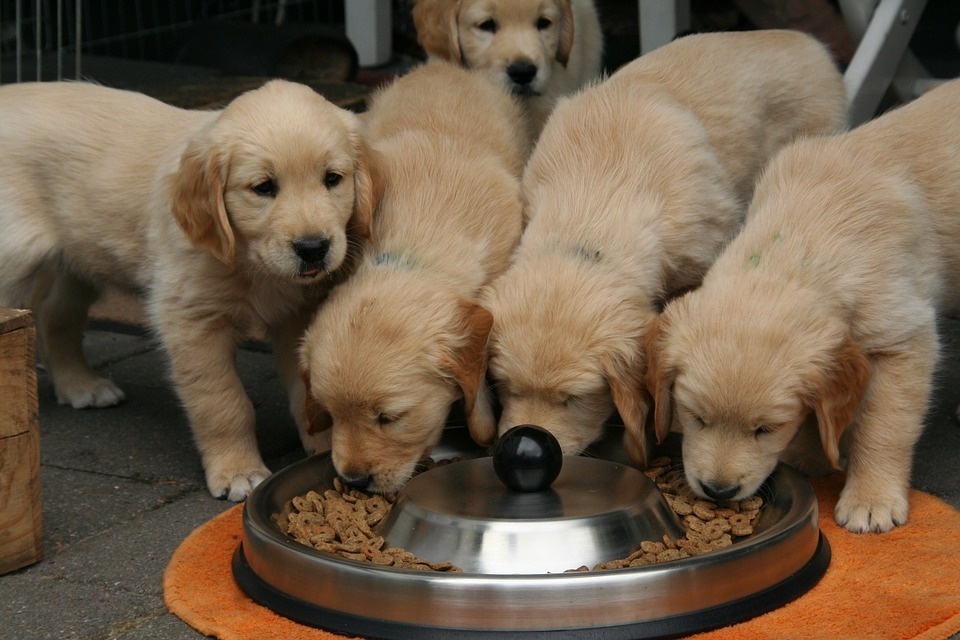If you want your bouncy, bubbly, beautiful puppies to grow into strong, healthy adult dogs, it helps to get the feeding part right.
For a pup's bones, muscles and organs to develop optimally, they need more nutrients than a grown or senior dog. Things change fast for a growing puppy.
First stage – mother’s milk
This is a crucial stage from birth to about six weeks. The mother dog has milk packed with nutrients and other ingredients to help keep the busy pup robust and well-covered. There really is no substitute for this, and responsible dog parents let mother dogs nurse and wean the little ones in their own time.
Second stage - solids
Around six weeks, it's time for solids. You may need to moisten the food with a little warm water for up to 8 weeks.
C.A. Tony Buffington, DVM, PhD, tells Pets WebMD[1] that the first half-year a pup’s nutritional needs change rapidly. This is the right time to get it right!
Which food?
High-quality premium puppy food that meets local and international standards is vital. Check that the food meets nutrient guidelines from both. Ask your vet for recommendations per brand, breed, and stage.
How often?
3x a day – from weaning to six months
2x a day from six months onwards
May differ according to breed. Ask your veterinary practitioner.
How much?
A lot! A puppy grows so much in the first few months. You’re probably inclined to give your pup a much as he or she can scoff, but it’s best to get professional input at this crucial stage. A bit of puppy fat around the body is fine up to 8 weeks. After that, it’s a risk. Check out this mass indicator.
Ask for a vet-approved feeding chart at your local veterinary practice. You can also talk to the breeder (if there was one unless you’re a fan of #adoptdontshop like us?). You may need to adjust volumes weekly!
Special food?
A diet not only contributes to growth, but it can also pre-empt and help to address problems down the line, like those related to genetics. "Large breeds such as Great Danes, Labrador Retrievers, and Doberman Pinschers are more likely to develop skeletal and joint problems, including hip dysplasia,” warns Pet WebMD[2]. “Although these conditions are primarily triggered by inherited factors, overfeeding can worsen the situation.” At the same time, the right food can address this. Have a look at this blog on feeding your pet for medical conditions and other complaints and check with your vet which foods will work best for your pedigree pup.
The other ingredients
Exercise – is essential. It helps limbs, bones and immune system develop. Exercise your pup at least once a day, if not thrice. Do not overdo it, either, though. It could lead to unwanted injury or joint, ligament or tendon strain and long-term injury.
Rest & relaxation – the other side of exercise, this helps those muscles recuperate, and that boundless energy develops into something more long-term and manageable as they grow up.
Love – affirmation with voice, touch, play, and presence is invaluable. Let him know you love him in all the ways.
Training – one of the greatest ways to ensure a healthy pup is to teach it healthy boundaries.



